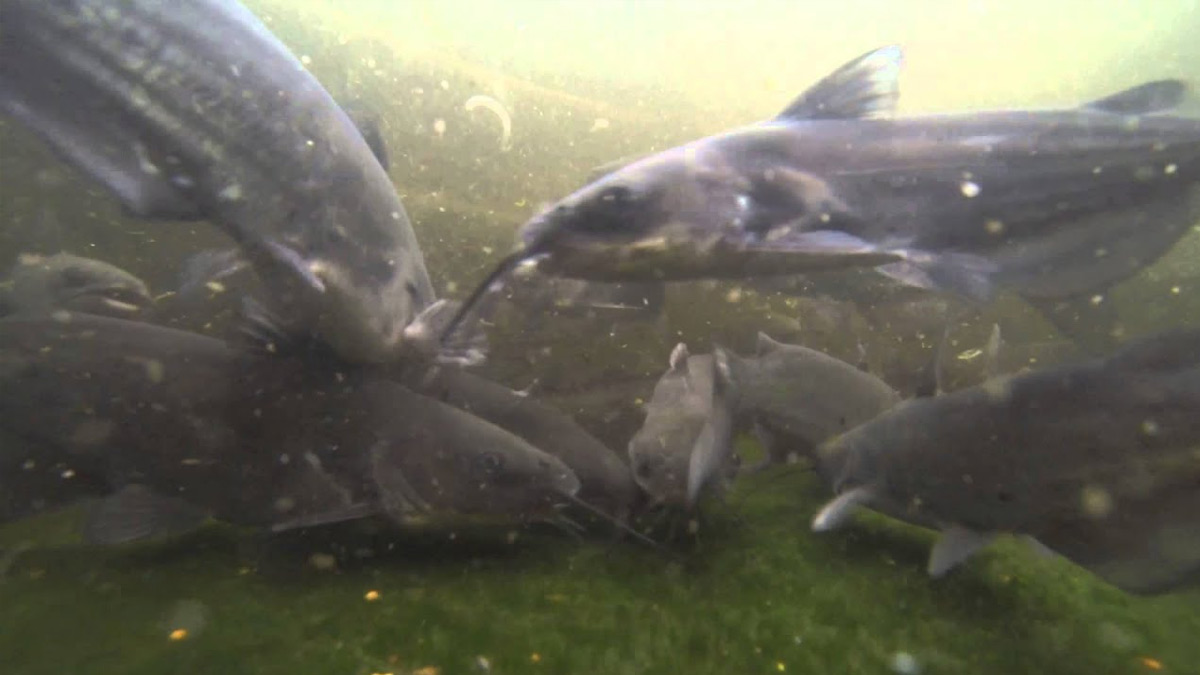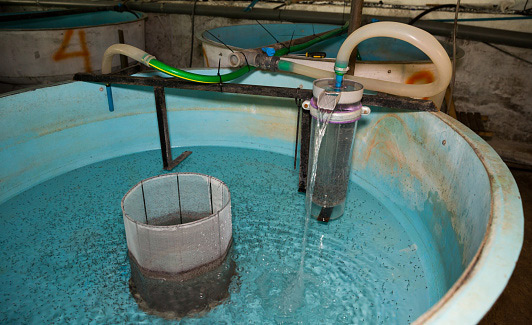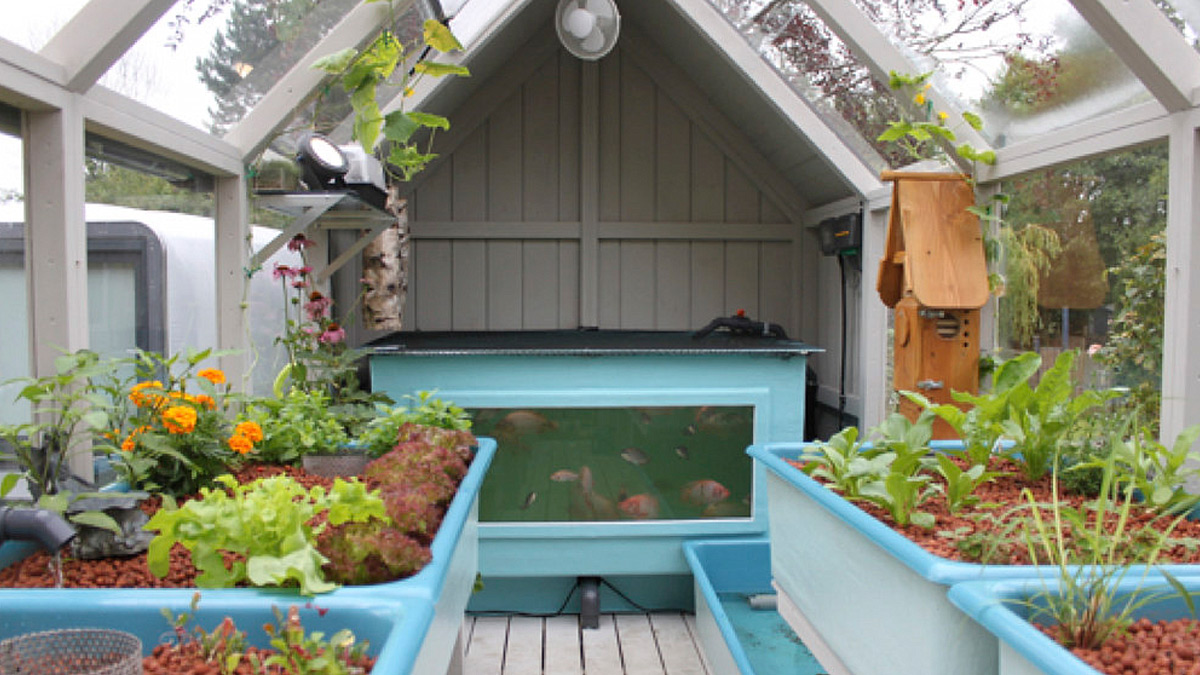on
Fish is a great source of protein but it can contain chemicals and impurities especially in foreign raised fish, so raising fish at home can be a safer alternative than buying fish from the store.
Three are three basic ways of raising fish, an outdoor pond, in a container such as a swimming pool, or you can go the in-depth route of aquaponics.
If you have lots of space and a freshwater source, then you could opt to have a large pond dug and stocked with whichever fish works the best for your environment. But what if you don’t have a lot of space, or you want to raise warm-water fish in a cold climate?
While there are several species of fish that do well in containers tilapia is the most common. So let’s say you want to grow Tilapia in colder climes, tank culture is your best bet. Fortunately, Tilapia are quite hardy and can tolerate a wider range of water conditions than many species.
Your prime enemy where Tilapia are concerned will be water temperature. Certain strains of Blue Tilapia can survive in water temperatures as low as 48 degrees, but growth is only maintained when temperatures remain north of 70 degrees.
Grow out, from fry to fillet, is about an 8-month process, so if you time things right you can fit a growing cycle into the warm season in most areas of the continental United States without too much heating.
Choosing your tank
You can use almost anything that can hold water as your fish farming tank. Old hot tubs, IBC totes, lined plywood boxes etc have all be pressed into use. Many folks that raise fish in tanks swear by the Easy Set pools available at places like Walmart and Target. End of season sales can really net you some bargains if you plan ahead.
To figure out how many cubic feet, or gallons, you will need, simply decide on how many pounds of fish that you want to harvest every six to nine months, depending on species of tilapia fingerlings that you select, and then divide that weight in half to get the cubic feet. Then multiply the cubic feet by 7.48 to get gallons. For example: if you want to have 144 pounds of tilapia in your pond at harvest time, you take 144 and divide it by two to get 72 cubic feet (144 / 2 = 72). Then, to get the gallons, you just have to take the cubic feet, and multiply by 7.48 to get 538.56 gallons (72 x 7.48 = 538.56).
Once you know how many cubic feet or gallons you need, it’s simply a matter of finding the right container to hold that much water; with a little lip at the top, so that your tilapia don’t swim over the edge. To get the cubic feet of a rectangular pond, you multiply the length, times the width, times the water depth. To get the cubic feet of a circular pond, multiply the radius, times the radius (r squared), times 3.14 (pi), then multiply the result times the water depth.
If you want to grow more than 100 pounds of fish in a single season, a 12’x3’ pool will work as long as it’s temperature-controlled, oxygenated, and filtered. (If not, it will only grow 10-15 pounds, even with aeration). It will hold around 2000 gallons of water, even when you leave 8 inches or so at the top.
Keeping the water clean

Home recirculating tanks are by far the easiest and can be successfully done by anybody that can get an above-ground pool (size depends on your goals) and a water hose. You’ll likely need to replace the vinyl liner every few years, but that’s it.
A drum clarifier is probably the easiest way to filter all of the organic gunk from the water. You can set it up just using siphons, or you can use an air pump. The goal is to make the water flow from the pool through two 55-gallon drums that are filled with orchard netting to catch the waste. Then it flows back to the pool.
A bio-filter will remove the toxic ammonia from the water, and you need that to happen. You can make it from a piece of PVC pipe and some other items, or you can buy one. I recommend making it.
Temperature
Most warm water fish grow best at temperatures over 80 degrees. If you live in a climate that actually has winter, your pool won’t reach that so you’ll need a solar dome. It’s like a giant shower cap for the pool and will keep the water warm enough, although you may need to add a tank heater in really cold climates and/or locate your tank inside a greenhouse.
If you are handy you could build a barrel stove with water coils that circulate heated water through the tank on a similar principle to those wood-fired hot tubs you see advertised in every outdoor magazine.
Aeration and Oxygenation

For fish to thrive, oxygen levels must be constantly monitored and kept above the critical threshold of 80 percent saturation. Insufficient oxygen levels cause poor digestion in the fish, so that they require more food. The risk of illness, poor growth rates, susceptibility to parasites and ultimately, mortality also increases.
There are many options for aeration and oxygenation, aerators chum the water and adds some oxygen, but a better option is an air pump designed for aquaculture. These can be had for under $60 and introduce a steady stream of oxygen to the tank.
Always make sure that you have a back-up power supply because it won’t take long for the oxygen to leave the water, especially if you have several fish in there.
Once all of these things are in place, it is time to get your fish and start your ‘farm’.
Get access to premium content and more!





